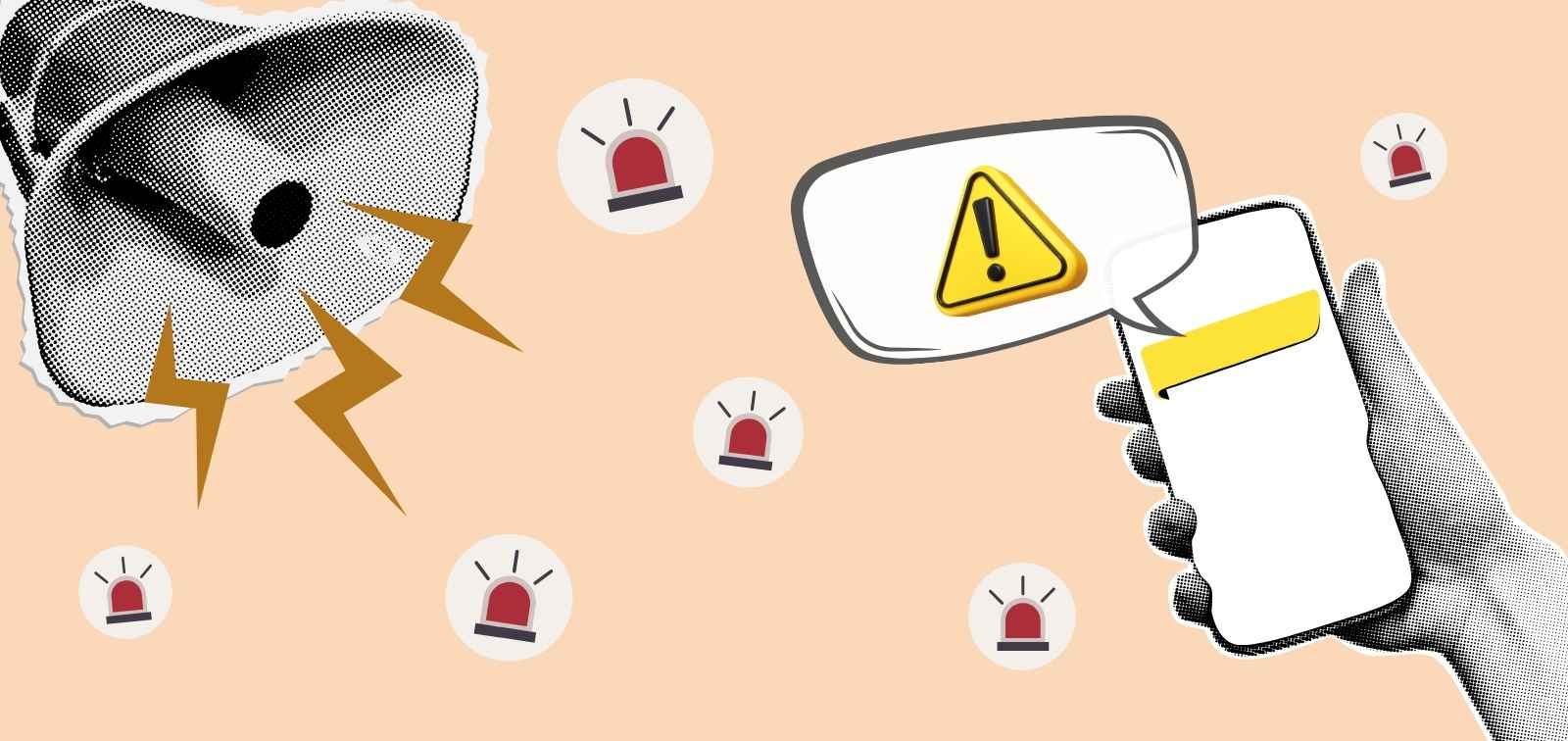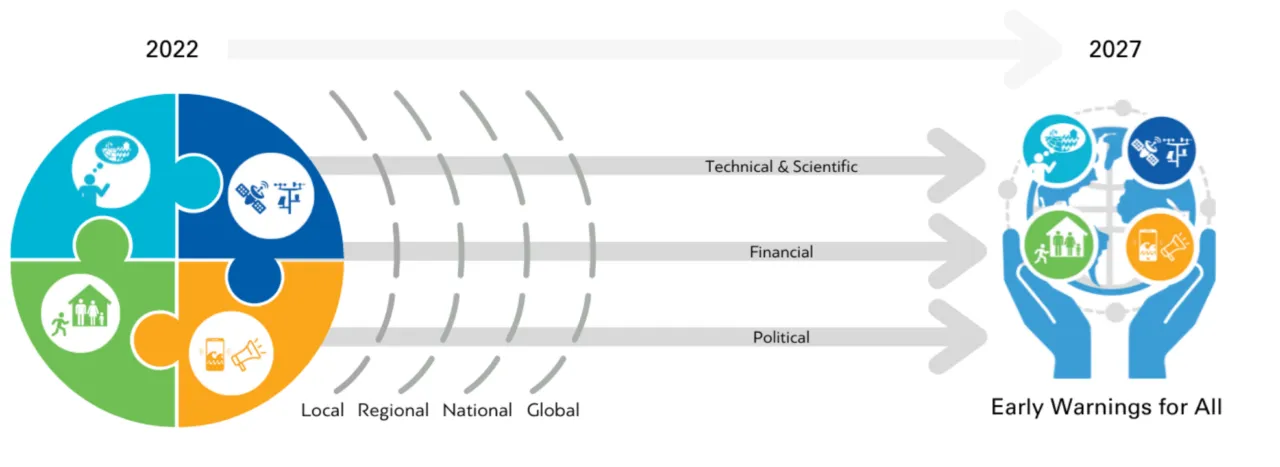Early Warning Systems

What are Early Warning Systems?
Early Warning Systems (EWS) are integrated tools designed to identify, monitor, and communicate potential emergencies before they cause harm. Their main goal is to reduce human, social, and economic losses by enabling an early and coordinated response to disasters.
These systems work by combining hazard monitoring, risk assessment, effective communication channels, and preparedness and response mechanisms. They are used to address a wide range of threats — from natural hazards such as heatwaves, floods, earthquakes, wildfires, storms, droughts, or tsunamis, to health emergencies, technological risks, and environmental threats like air pollution.
According to the World Meteorological Organization (WMO), warnings issued at least 24 hours in advance can reduce damage by up to 30%. However, one third of the global population still lacks access to effective early warning systems.
Core components of an Early Warning System
An effective EWS is built around four interrelated components:
- Risk knowledge: Identifying potential hazards, understanding who or what is vulnerable, and assessing the level of exposure. This information is the foundation for designing prevention measures and local action plans.
- Monitoring, detection, and forecasting: Continuous observation of environmental, meteorological, or social indicators to detect changes that may signal a potential threat. This process relies on technologies such as sensors, satellites, artificial intelligence, and climate prediction models.
- Communication and dissemination of alerts: Warnings must be clear, reliable, and accessible. They are transmitted through multiple channels (mobile messaging, radio, television, social media, sirens, etc.) to ensure they reach everyone at risk, especially the most vulnerable populations.
- Preparedness and response capacity: An alert is only effective when communities, institutions, and authorities are ready to act. This requires emergency plans, drills, public training, and strong coordination among different levels of government.
Early Warning Systems for All
It is essential that early warning systems are people-centered. This means they should go beyond the technical dimension and integrate social, cultural, and linguistic aspects to ensure that alerts are understandable and truly useful.
Despite major technological advances in recent years, many countries still lack sufficient early warning coverage. The lack of infrastructure, stable funding, and institutional capacity continues to limit the effectiveness of existing systems. In the most vulnerable contexts, gaps in communication, coordination, and access to information often mean that alerts do not arrive in time, or that people are unsure how to respond.
To address these challenges, several international initiatives have been launched to improve coverage and equity in access to EWS. Programs such as Early Warnings for All (EW4All) and the Climate Risk and Early Warning Systems (CREWS) initiative represent a global commitment to disaster preparedness and risk reduction. Their goal is to ensure that every person on the planet is protected by multi-hazard early warning systems by 2027. These initiatives promote stronger local capacities, international cooperation, and greater investment in infrastructure to build safer, more resilient societies. Although progress has been observed since implementation of the EW4All initiative, significant gaps and inequities in accessibility remain.
READ MORE
COLLAPSE
- New epidemiological tool provides warnings of heat and cold related mortality by sex and age in Europe(ISGlobal, 2024)
- ISGlobal Launches an All-Hazards Crisis Preparedness and Response Hub(ISGlobal, 2023)
- Joan Ballester Wins European Research Council Grant to Forecast the Health Effects of Air Pollution(ISGlobal, 2023)
MULTIMEDIA MATERIAL

